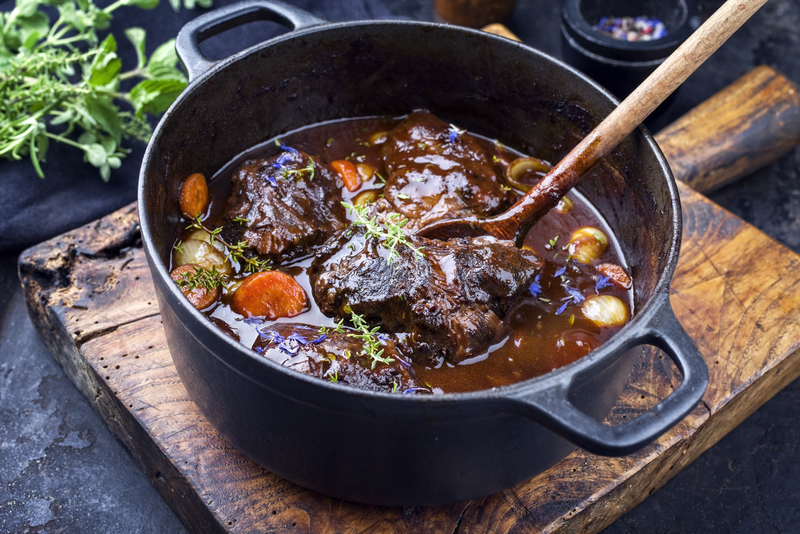 The Dutch oven is a versatile and timeless piece of cookware that has been a staple in kitchens for centuries.
The Dutch oven is a versatile and timeless piece of cookware that has been a staple in kitchens for centuries.
Its ability to hold and distribute heat evenly makes it a favorite among chefs and home cooks alike. But does a Dutch oven act like an oven?
In this article, we will explore the various ways in which a Dutch oven can mimic the functions of a traditional oven, and how it can be used to bake, roast, and even broil your favorite dishes.
Baking in a Dutch Oven
One of the most common uses of a Dutch oven that resembles an oven is baking.
Whether you’re making bread, cakes, or casseroles, a Dutch oven can create an oven-like environment for even and consistent baking. Here’s how:
a. Retained Heat: Dutch ovens are excellent at retaining heat due to their thick walls and tight-fitting lids. When preheated in an oven or on a stovetop, they can maintain a consistent temperature, much like an oven.
b. Steam Trapping: The Dutch oven’s lid helps trap steam, creating a moist environment ideal for baking bread with a crispy crust and a soft interior.
c. No Need for a Baking Stone: Unlike ovens that often require a pizza or baking stone for even heat distribution, a Dutch oven’s cast iron construction eliminates the need for additional equipment.
Roasting in a Dutch Oven
 Roasting meats and vegetables is another function where a Dutch oven can perform like an oven:
Roasting meats and vegetables is another function where a Dutch oven can perform like an oven:
a. Even Heat Distribution: Dutch ovens’ cast iron construction ensures that heat is distributed evenly throughout, allowing you to achieve a beautifully browned and tender roast.
b. Lid for Moisture Retention: Similar to baking, the Dutch oven’s lid helps retain moisture when roasting, resulting in succulent and flavorful dishes.
c. Versatility: Dutch ovens can seamlessly transition from stovetop searing to oven roasting, making them perfect for dishes like pot roast and whole roasted chicken.
Broiling with a Dutch Oven
While Dutch ovens don’t have an actual broiling function like an oven, they can be used creatively to broil certain dishes:
a. Broil Lid-On: To mimic the broiling effect, place your dish with the lid on under the oven’s broiler. The Dutch oven’s lid will help capture heat and cook the top of your dish, similar to broiling.
b. Cheese Melting: This technique works exceptionally well for dishes that require melting cheese on top, like casseroles or French onion soup.
Why Choose the Lodge Enameled Cast Iron Dutch Oven?
The Lodge Enameled Cast Iron Dutch Oven is a versatile and durable cookware piece.
It’s constructed from high-quality cast iron, known for exceptional heat retention and even heat distribution, while its enameled exterior adds durability and resistance to staining and chipping.
This Dutch oven comes in various sizes, from 1.5 quarts to 7.5 quarts, catering to different cooking needs.
Additionally, it offers a wide range of vibrant enamel colors for style-conscious cooks.
The Dutch oven’s versatility shines through its ability to handle various cooking techniques like baking, roasting, simmering, frying, and even broiling (with precautions).
It’s compatible with all stovetops, including induction, and oven-safe up to 500°F (260°C).
Cleaning is a breeze thanks to the enamel interior, which is dishwasher safe but typically requires only a simple hand wash.
In summary, the Lodge Enameled Cast Iron Dutch Oven is a favorite among cooking enthusiasts and professionals for its quality, affordability, and versatility.
Bottom Line – Does a Dutch Oven Act Like an Oven?
 In summary, a Dutch oven can indeed act like an oven in many ways.
In summary, a Dutch oven can indeed act like an oven in many ways.
Its exceptional heat retention, moisture-trapping lid, and versatility allow it to function as a baking, roasting, and even broiling tool.
While it may not entirely replace your oven, a Dutch oven is a valuable addition to your kitchen, expanding your cooking possibilities and delivering delicious results for a wide range of dishes.
So, the next time you’re craving a homemade loaf of bread or a perfectly roasted chicken, don’t hesitate to reach for your trusty Dutch oven.



